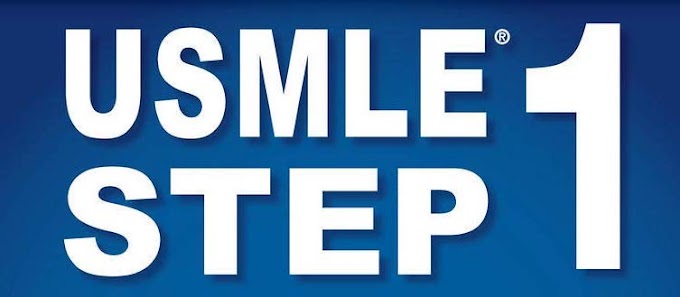Medicine involves the study of much more than just the inner machinations of the human body. To understand when something is wrong, we much be observant of men in their naturalistic state, unselfconscious and driven by the spur and play of the moment. Noticing larger patterns emerge depicts an anthropological and holist view of people. These become more apparent once a phenomenon is recognized. Renowned neurologist Oliver Sacks observed that once registering a patient with Tourettes, he took a stroll down Times square and saw 3 people with similar manner of ticquer where previously he'd never noticed them. It is this street-application of concepts we learn that reinforce and actualize our knowledge. After learning about the prisoners dilemma, here is how I saw it play out as I took a stroll down the busy streets of Karachi.
A state of unstable stability
It is an axiomatic truth. To attain any degree of functionality, a system must be stable. However, it is the shrouded and often misunderstood idea of stability that stops this conversation from yielding the progressive results it could. It is perhaps a conceptual bias, as stability is always very closely linked to ideas of public utility and a progressive state. We must understand that stable systems are formed in our society as a result of its people and the nature of these systems can therefore be, at times, counterintuitive - for to understand what we create as a state, we must first take an honest look at ourselves.
Mutually best isn’t always what’s stable.
Allow me to set the stage. You’re roaming the streets of Saddar on a quest to find a very specific type of screwdriver. After being denied by five shops, you hit the jackpot on the sixth. Once you’re actively engaged with the shopkeeper, both of you have two strategies that can be employed. You can be either be hostile (aggressive) or passive (nice and submissive) with your negotiations and the shopkeeper likewise with his pricing. To better understand this dynamic, let us assign arbitrary quantitative values to the scenario that would unravel depending on the strategies used.
The reward for winning the negotiations is +50 points. On the flip side, you are sanctioned with a -10 point penalty for wasting time and a -100 point penalty if the screwdriver isn’t purchased at all.
Let's suppose the weather was pleasant and Karachi was being gentle to its people. You and the shopkeeper decide to be passive. The winner of the negotiations is awarded the +50 points while both parties are sanctioned with -10 because of the time wasted in their prolonged conversation regarding much more than just the price of the screw driver - brimming with mutual respect and hospitable exchanges. Any one party can be expected to win the negotiations 50% of the time and so the pay-off becomes the average of +40 (winning + time wasting penalty) and -10 (time wasting penalty) , which is +15. This seems like a reasonable way to go about the exchange until it is realized that by being hostile in an environment full of passive negotiators, not only do you always win, but you do so expediently. This means that the hostile party always gains +50 without a penalty. Once this fact comes to the attention of the general market, more hostile strategists arise. Ultimately, there could be a situation where you and the shopkeeper are both hostile. The nature of these exchanges is one of impulsiveness. This means that decisions are made in the moment, and often no compromise is reached - it’s all in or nothing. If the shopkeeper doesn't sell at your price, you walk. This means that, assuming you win 50% of the time, your mean payoff would be the average between +50 (winning) and -100 (walking away); which is -25.
As you can see, the logical strategy to employ is passiveness. This is because every time you or the shopkeeper chose to be passive, the overall pay-off was positive. So in an ideal world, where everybody understood this, every individual would have a pay-off of +15. This is, however, only a theoretical possibility because this strategy lacks stability. A key feature of a stable strategy is that it cannot be infiltrated from within and strategy 1 is an easy subject of a treacherous downfall. In a market full of passive strategists, any hostile party would have a greater pay-off (strategy 2 and 3). Having noticed this, more people would opt to be hostile instead until the scales completely shift to strategy 4. Ubiquitous hostility also isn’t the solution as it is subject to the same treachery as strategy 1.
One would imagine, then, that there must be continuous oscillations in the temperament of these folks in the marketplace with the rise and drop of passive/hostile strategists. However, this is not the case. An equilibrium is established in which the fraction of hostile strategists have the same average pay-off as passive ones. And at this stable point, the average pay-off would be significantly lower than +15. The difference between these values is the necessary cost we all pay to live and work in a stable system which is a product of our own character. The characteristic assumption made in this simulation is that all of us are selfish. And this selfishness could even be attributed to the greater collective success of the human race. But you and I, having read this piece, would perhaps consciously attempt to be nicer in an isolated interaction with a shopkeeper because it makes more sense. Therefore, it is through introspection, that we understand our true motivations and are liberated from them. And that makes all the difference.
Saddar, Karachi. Credits: Express Tribune Pakistan
There can be more than one stable point
There is a tide in the affairs of men.
Which, taken at the flood, leads on to fortune;
Omitted, all the voyage of their life
Is bound in shallows and in miseries.
(Julius Caesar, Act-IV, Scene-III)
Brutus, in conversation with Cassius warns him of the volatility of power. How tides shift along with the motivations of men. They must attack while they lie at the crest of the tide, for anyone who opposes it is bound to be defeated. Brutus is essentially highlighting the alternating, and thus unstable, nature of stability.
Allow me to propose another hypothetical. The Karachi police and the thieves of the city play by a certain strategy: “Police chases the thieves, the thieves run away”. In a city where this strategy is dominant, any thief that opposes it by chasing the police instead will suffer grave consequences. And this seems perfectly reasonable. However, in a world (or rather era) in which the asymmetry between the police and thieves is less apparent, things could be very different. For example, if a union of thieves no longer fears the authority of the police, there is a paradoxical strategy that can form: “Police don’t chase the thieves, thieves don’t run”. It is obvious why this sounds counter-intuitive. However the reason it can exist is because, in this isolated example, no one gets hurt as nobody is being chased down thus making it a stable strategy. In a world where this paradoxical strategy is predominant, any sensible policeman that opposes the strategy by single-handedly chasing the union of thieves is very likely to inflict harm on themselves and not achieve anything.
Whichever stable strategy is employed by the majority - whether it be sensible or paradoxical - is the one that is adopted and opposition to it is penalized. If the paradoxical strategy is dominant, but a large group of policemen decide to chase the thieves regardless, then the ratio of sensibles to paradoxical strategists increase, thus creating an attraction towards the sensible strategy. It is clear that we would not want to live in a world where this specific paradoxical strategy is predominant. But in our own history, we have seen that when corruption and a tyrannical hierarchy reigns the ranks of the police, the asymmetry between cops and thieves is less heightened. The lines of good and bad are blurred and the institute loses its authority. Alternation between these two strategies is perhaps the least desirable outcome as the nation loses the trust of its people
It is only after we understand this can we attempt to change a stable state whose only constant is instability.







0 Comments